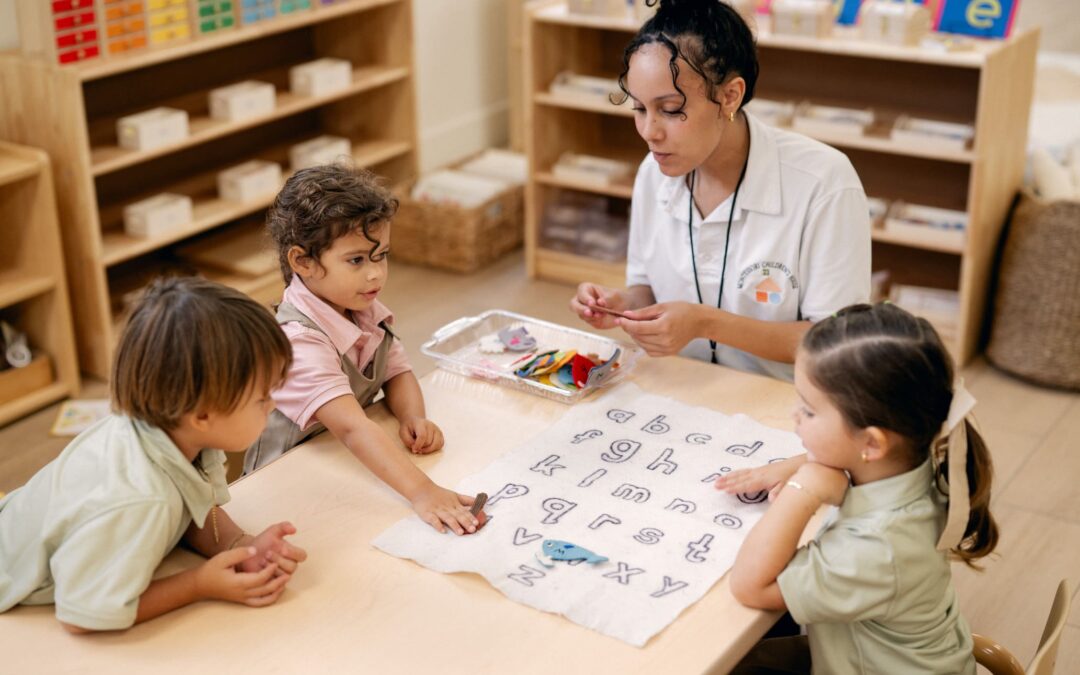It doesn’t matter if a child is learning in a traditional classroom or a Montessori one. One thing that many youngsters struggle with is the notion of tattling versus telling. While Montessori teachers don’t abide by the rigid structure of a conventional classroom, they do intervene to discipline and guide students.
So, what is the Montessori approach to dealing with tattle tales? This guide breaks down everything you need to know and offers tips that you can implement at home.
Always Set Rules for Seeking Adult Help
Most parents have to deal with a child lashing out at some point. Many of these scenarios involve other children, such as siblings, cousins, or school friends. To teach your child about tattling versus telling, you must set rules for them to follow.
Encourage them to tell a teacher, parent, or other adult when a situation becomes unsafe or out of their control. This may include:
- When someone gets hurt
- When they witness bullying
- When the situation is unsafe without an adult
- When they feel scared or unsure how to respond
Let’s say two children are fighting over a pair of scissors. If one of them yells, “He took my scissors and won’t let go!” many would consider this tattling, as the children often have the knowledge and independence to solve this dispute independently.
However, if the situation escalates and the blade ends up cutting a student’s skin, it becomes unsafe for the children, and it’s time to tell an adult. If one kid calls the other names, it might also be time to bring an adult in.
You can set rules for when to tell an adult about a problem and when not to tell them. For example, many young children struggle with sharing their toys. Remind them that sharing is a rule and isn’t a reason to get upset.
Recognize the Underlying Reasons for Tattling
While being a referee to tattling children can be frustrating, it’s important to understand why they do it. A student may tattle on another to seek attention or to avoid blame in a situation involving another child. They may even threaten tattling as a way to gain control over another student.
They need to develop emotional awareness to stop tattling on others. This can be a process for children, but it’s your job to guide them through it.
Encourage Problem-Solving Without Dismissing Children
When it comes to tattling versus telling in a classroom community, children have teachers as guides, rather than referees. An educator’s goal is to build a student’s problem-solving skills and emotional awareness.
Here’s how teachers or parents can effectively deal with children who tattle on others:
- Address their concerns: It’s important to validate a child’s feelings with phrases like “I see you’re upset. Tell me why.”
- Offer to help: The Montessori approach is all about independent learning, but that doesn’t mean instructors don’t help. They can lead a discussion about the students’ conflict to help them resolve the problem.
- Listen to each child’s perspective: You should ask both children to express their feelings and encourage each other to listen.
- Have children repeat key parts of the discussion: To promote active listening, children should repeat what the other person says when prompted.
- Promote critical thinking: Instead of creating a solution, you can ask the children to find their own ways to resolve their conflicts.
Let’s see how this situation would play out in a real-world scenario. Jackson is a four-year-old boy who tells his Montessori teacher when Wes, another student, won’t let him join an activity. The teacher prompts Jackson to tell her why he’s upset and offers support by saying, “This is an issue you need to work out with Wes. Let’s go talk with him about it.”
While talking with the two boys, the teacher can use phrases like, “Wes, why did you not want Jackson to join you?” and “Jackson, how did Wes’s behavior make you feel?” She may ask them both, “How do you think we can resolve this?” to encourage independent thinking. In the end, each student can calmly work out their issues and reach a fair compromise.
Remember To Be Patient With Children as They Learn
During early childhood, kids may not understand tattling versus telling immediately. It can take them time to distinguish these scenarios and learn about responsibility and honesty. Be patient with them throughout this process.
The first few times they tattle about a peer or sibling’s wrongdoing, walk them through their frustrations and help them understand why it’s wrong. Advise them on ways to solve these problems on their own to reduce the number of times they tattle.
Many students are conscious of the rules but are afraid to speak out because they don’t want to be seen as a tattletale. You must teach them that reporting unsafe behavior isn’t tattling. Reassure them that alerting an adult about a dangerous situation is the responsible thing to do and won’t get them in trouble.
Be Clear When Responding to Children Who Tell vs. Tattle
Part of the behavioral learning curve involves how adults respond to children’s requests. Suppose a six-year-old routinely tattles on others for harmless reasons. You could firmly remind them that tattling about an issue they could handle on their own isn’t needed.
On the other hand, if a student speaks up in a dangerous situation, adults should praise them for their responsibility and maturity. Seeing a clear distinction between the two will help children learn how they should act in certain scenarios.
Embrace a Montessori Education for Your Children
These Montessori teaching principles can be extremely effective in and outside the classroom. This child-centric, independent approach to tattling versus telling is one of the many strategies that educators deploy inside a Montessori classroom.
If you want your child to learn to become independent, develop essential social skills, and think for themselves, consider enrolling them at Montessori Children’s House of Miami Lakes. Our team follows the primary Montessori curriculum through engaging and educational materials.
Contact us online or call (305) 823-5632 to schedule a tour and see if our classroom is the right fit for your child.

